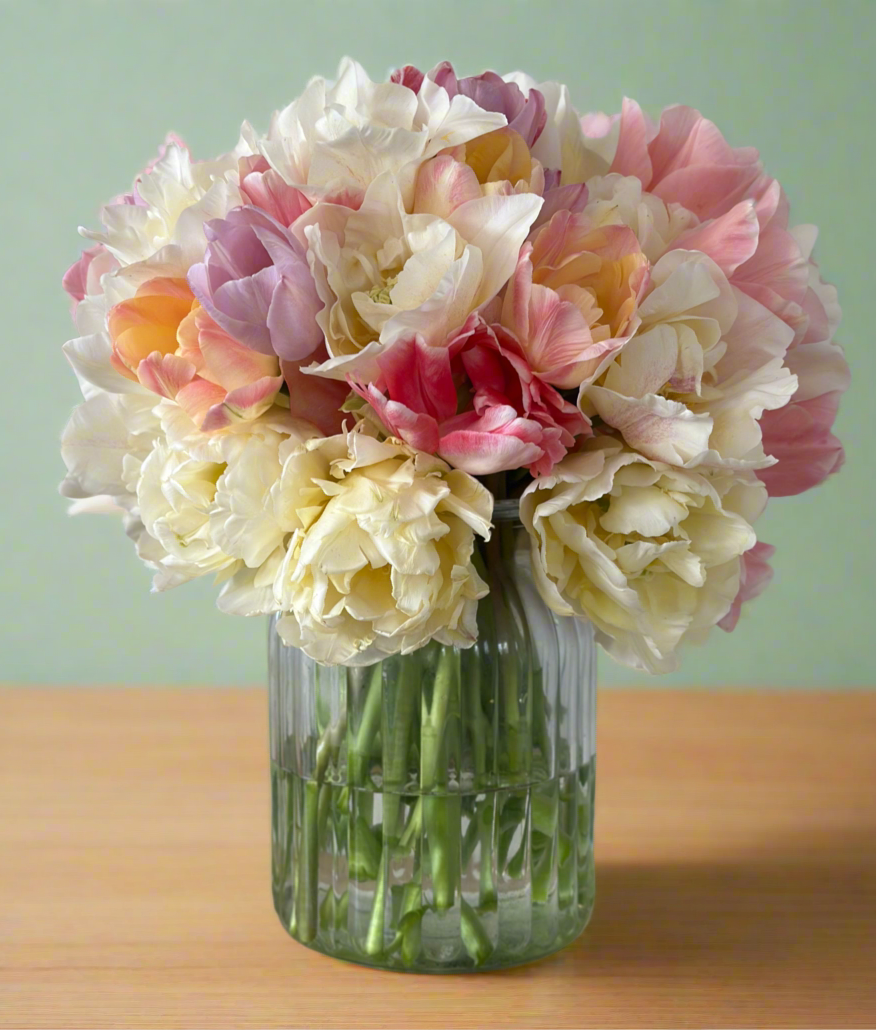
Making the Most of Your English Cut Flowers
Share
There’s nothing quite like a vase of freshly gathered English blooms; their scent, movement and colour breathe joy into any space. But once they’ve been snipped from the garden or flower patch, the clock starts ticking. With a few simple steps, you can keep your flowers looking their best for longer (and no artificial preservatives in sight!
1. Keep It Clean
Start with a sparkling clean vase – no shortcuts here. Any lingering bacteria will travel straight up your flower stems, shortening their life. Wash thoroughly with hot, soapy water, rinse, and dry.
2. Harvest at the right time
If you are cutting from your own flower patch or garden, knowing the stage to cut your blooms is crucial. Roses, tulips, ranunculus, cosmos and peonies will all continue to open in the vase, so these should be harvested before they are fully open. Dahlias, zinnias, sunflowers, marigolds and scabious don’t develop much once cut, so pick these at their prime. I love to have a mix of fully open and one-their-way blooms in my bouquets so that my arrangements change over time and last longer.
3. Recut & Refresh
- Cut stems on a diagonal with sharp scissors or a knife to increase the area for water absorption.
- Remove any leaves that will sit below the waterline – they’ll rot quickly and encourage bacterial growth.
- Change the water every 2-3 days, giving the stems a quick trim each time to reopen them.
4. Vase Placement Matters
Avoid placing your flowers:
- In direct sunlight
- Near heat sources (like radiators or cookers)
- Next to fruit bowls (ripening fruit releases ethylene gas that speeds up wilting.
Cooler, indirect light is best to help blooms last longer.
5. Know Your Blooms
Not all flowers are created equal when it comes to vase life. Here are a few with special requirements:
- Daffodils: These release a gooey sap that’s harmful to other flowers. Let them condition in water alone for at least 6 hours before mixing with other stems – and don’t recut them after that.
-
Tulips: They continue to grow in the vase and bend toward light. Recut stems every couple of days and support them with other stems if you prefer a tidier look.
- Hydrangeas: These are thirsty. Try submerging the whole bloom head in water for a couple of hours if they start to wilt.
- Roses: Strip most of the foliage and give the stems a deep cut. If they flop, plunge them into warm water for a quick revival.
- Nigella: Allow the seed pods to form once the petals have dropped.
6. The Mythical Additions…
You’ve probably heard of people adding pennies, bleach, sugar or vinegar to flower water. While these can help in certain ways (sugar feeds the bloom, vinegar fights bacteria), we’ve found the most reliable, gentle method is simple: fresh, clean water, changed regularly. That’s it.
7. When Their Time Has Passed…
- Deadhead spent flowers; just like in the garden, this allows any new buds on the stem to flower.
- Dry flowers like lavender, strawflowers, and statice by hanging them upside down in a cool, dry spot.
- Save petals from fading blooms to make your own potpourri – just dry them on a windowsill or radiator and mix with dried herbs and a drop of essential oil. This works particularly well with rose petals.
Your cut flowers deserve to be celebrated through every stage of their life – from fresh and perky to softly fading. Cut flowers are supposed to be an ephemeral delight, but with a little care and know-how, their beauty can linger a little longer.
